English | Dutch |
|
| Driving in Iran | |
Tehran (Iran), March 22nd 2014
|
|
| |
|
We were in Iran three times before, but all those times we travelled with the backpack. This year we came back for our fourth visit, but now with our own jeep. It was our desire to travel once to this beautiful country with our own wheels, just because it brings a new dimension to traveling in Iran. However, not everyone is positive about traveling by car in Iran. Obtaining fuel can be difficult, a car insurance is not available for foreigners (which means that you are driving around uninsured), and traffic in cities is extremely chaotic. We started our visit to Iran in the mountainous region of Iranian Kurdistan, away from the hectic big cities. The border crossing between Iraq and Iran went far from smoothly, but eventually we managed to get in (see also the article: Stress at the border with Iraq and Iran). We asked at the border if it is possible to buy a car insurance for Iran, but the customs officer was clear. "No. Just drive and make no accidents." |
|
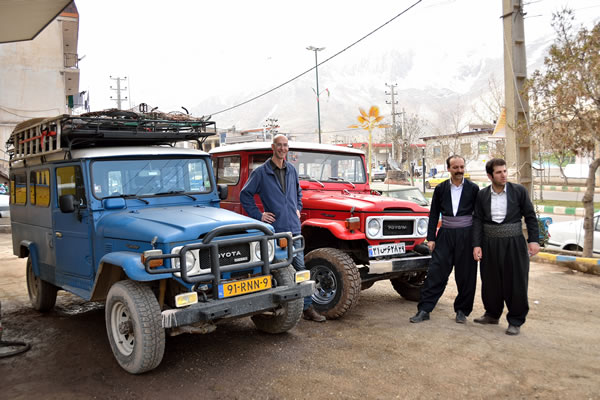 |
|
Our Land Cruiser 40-series with a little brother in Iran's Kurdistan |
|
Already the first few days we noticed that driving your own car through Iran is magnificent. We crossed the spectacular Howraman Valley on our way south, and got in this area lots of attention from the local people. Our model Toyota Land Cruiser, the 40-series, was still built as a vehicle for the war in the 1980s during the Iran-Iraq War. And bacause the Kurdish part of Iran borders Iraq, a lot of these 40-series Land Cruisers are still driving around here. However, all these Land Cruisers are petrol models, while ours is a diesel model. And that’s what the local Land Cruiser drivers liked a lot and were curious about. Obtaining car fuel is not always easy in Iran. Fuel is rationed in Iran, and allows people to buy a limited number of litres, depending on the job they have (and litres they need). Of course, a taxi driver gets more than an office clerk, and a truck driver gets more than the taxi driver. To control the system, local people all have a fuel card with a chip on it (compare it with a debit card that allows you to get cash from an ATM), on which is registered how much litres they have left. No card, no fuel. Previously, only petrol was rationed (almost 100 % of the passenger cars run on petrol), but now also the diesel (for trucks and buses) wasn’t freely available anymore. The ration price of a litre of diesel is 1500 Rials (€ 0.036) and if you have consumed your ration litres, the price rises ' explosively' to € 0.085 per litre. In our experience, still a ridiculously low price. | |
 |
|
An Iran made Paykan with a lot of load |
|
Refuelling the car means that you first have to look for a petrol station. Each medium sized town has got one. Then you have to hope that there is also diesel available at that particular station. That was not always the case (especially in urban centres where few truck are driving). We found out that it was easier to find diesel along the main highways or city suburbs (where trucks are driving) instead of the city centres. The availability of diesel is instantly recognizable; just look for the queue of trucks waiting. Most of the time we drove past the long line and asked the pump attendant if we could refuel diesel. Initially they were surprised, because they didn’t expect a normal car to drive on diesel. Diesel is for trucks and buses is what you see them think. But when we explained him that we really need 'Gasoil', the attendant said that we could jump the queue and get our litres first. If we were lucky, we could use the ration card from one of the waiting truck drivers, and otherwise we paid the higher rate, which is still a good deal. In the desert area of Iran diesel was frequently sold out and long queues of trucks were waiting for new diesel to arrive (which could take hours or even days). In such areas, where the stations are also far apart, it is advisable to fill up where possible, even if you just need 10 or 20 litres. The big question is whether we have to pay for the fact that we have been able to fill up for subsidized diesel, as some sort of tax, while leaving Iran We read on the internet that some foreigners paid several hundreds of Euros "tax", when they left Iran. Time will tell. Outside the cities, driving in Iran fairly relaxed. The roads are generally in good condition and it is not extremely busy on the roads. In the mountain areas, the roads are often steep, making the use of low gears necessary. The trucks are often the types from the '60s, '70s and ‘80s, and usually smoke like a chimney. Driving in the city is a disaster. Traffic rules are there, but are not enforced. To the extent that we have experienced, there are three important "rules" that are used by Iranian drivers:
|
|
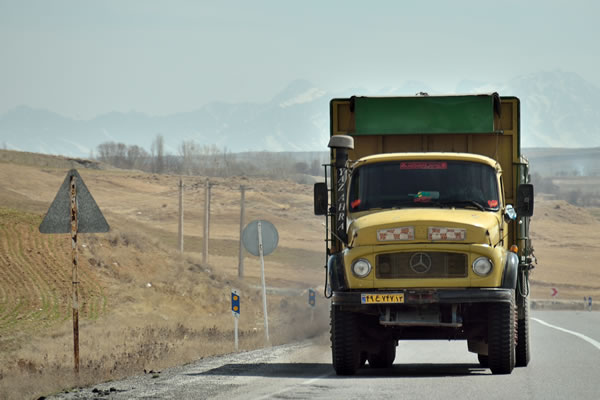 |
|
A fossil on the road ... an old Mercedes truck ... still plentiful on the Iranian roads |
|
 |
|
Chaos in the traffic of Khorramabad, in Iranian Lorestan |
|
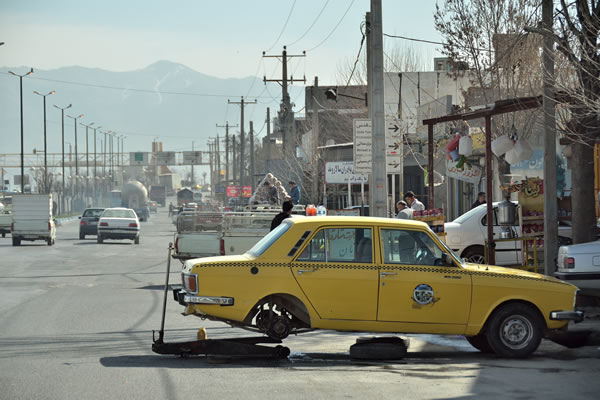 |
|
Car maintenance on the street |
|
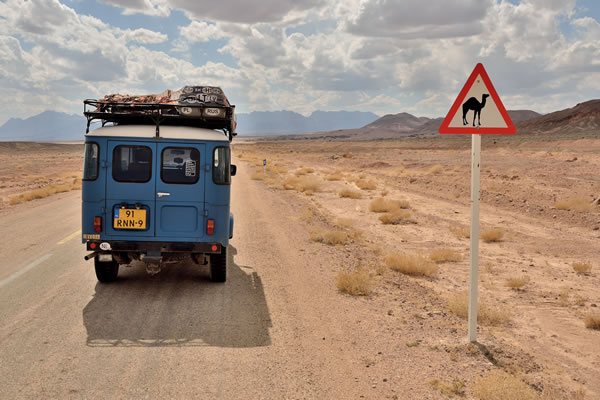 |
|
Away from the noise and pollution, in the Iranian desert |
|
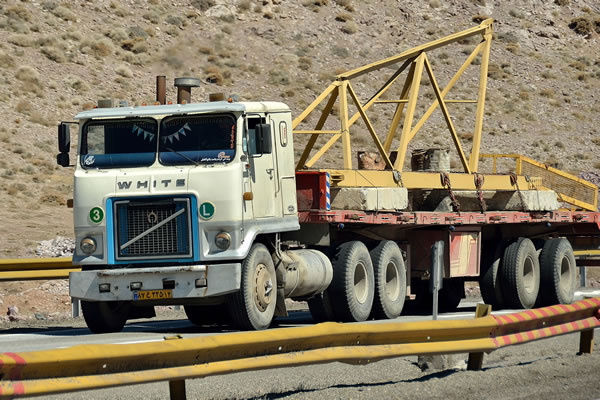 |
|
American trucks are still often seen in Iran, like this aging White |
|